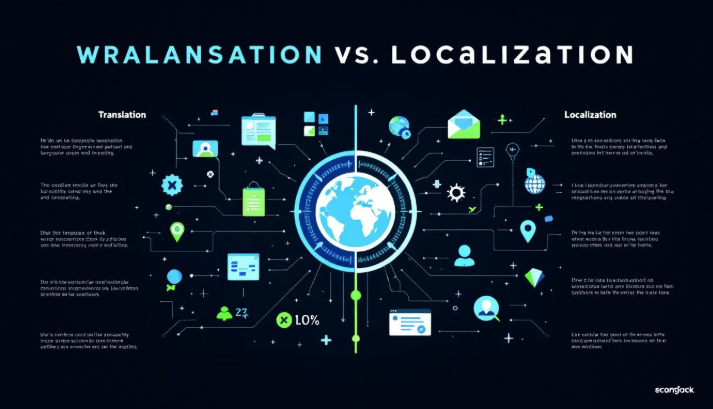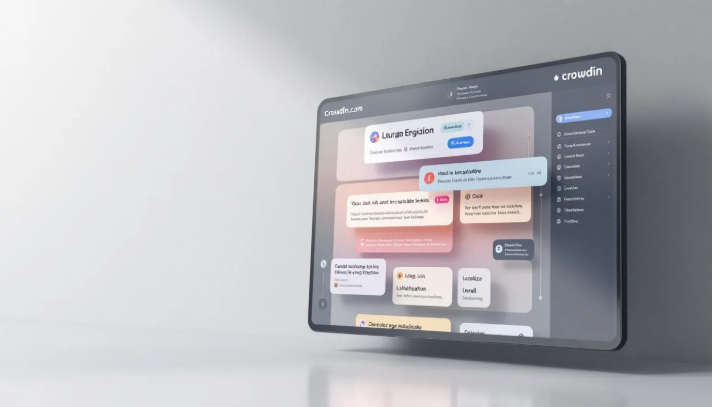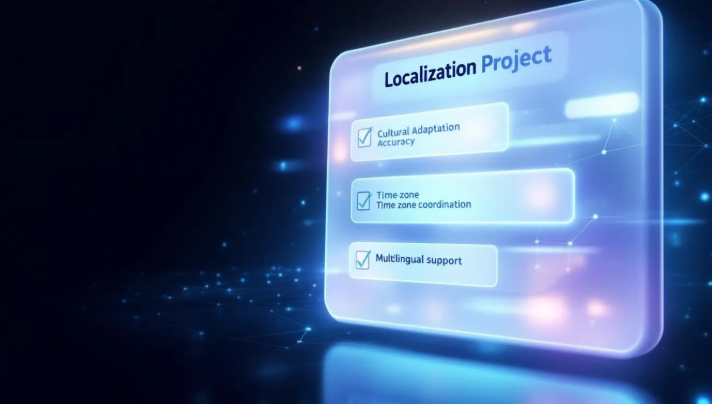Top Translation and Localization Services to Boost Your Business

Key Takeaways
- Translation and localization services distinct purposes; translation focuses on converting language while localization adapts content for cultural relevance and audience engagement.
- Professional translation services enhance accuracy and customer loyalty by utilizing native speakers and technologies like Translation Memory, allowing for cost-effective and efficient project completion.
- Successful localization projects require thorough planning, effective technology use, and quality assurance processes to ensure content is culturally appropriate and resonates with target audiences.
Understanding Translation and Localization
Translation and localization are often used interchangeably, but they have distinct purposes. Translating converts text from one language to another for clear communication. Localization adapts content to align with the cultural norms and expectations of the target audience. This includes customizing cultural references, language terminology, and visual elements to ensure the content is relevant and relatable.
Localization enhances engagement by making content more relatable and culturally appropriate for diverse audiences in a local context. For example, a localized training program for a multicultural environment is more effective than a mere translation in the world. This method not only breaks down language barriers but also fosters a deeper connection, leading to better comprehension and retention of information.
Localization goes beyond language adjustments, requiring a deep understanding of the target culture and preferences, which can impact localization costs. The cost varies based on languages involved, content volume, and material complexity. Despite the costs, investing in high-quality localization ensures content resonates with the audience, driving engagement and loyalty.
Benefits of Professional Translation Services

Professional translation solutions offered by a translation agency provide numerous benefits. Experienced agencies guarantee high-quality translations, employing native speakers or fully bilingual professionals to ensure accuracy and cultural relevance. This expertise is key to delivering content that resonates with the audience, enhancing customer satisfaction and loyalty.
A reputable translation company is marked by flexibility and commitment to client satisfaction, evidenced by positive feedback and successful projects. By investing in professional localization, businesses can expand market reach and boost customer loyalty. Additionally, using Translation Memory (TM) enhances translator productivity by speeding up project completion with a database of prior translations.
Professional translations help businesses overcome language barriers, making products and services accessible to a broader audience. This accessibility can increase customer engagement and loyalty, driving business growth. Accurate translations enable businesses to effectively communicate their message globally, fostering trust and credibility.
Key Features of a Reliable Translation Company
Several key features indicate a reliable and quality translation company:
- A team of native speakers produces accurate translation and culturally relevant translations, understanding language nuances.
- Companies like Acclaro and Apostroph Group have strong reputations for delivering quality translations.
- Acclaro has over 20 years of experience.
- Apostroph Group has over 27 years of experience.
Quality assurance processes are critical. Certifications ensuring industry standards, especially in regulated sectors, demonstrate a company’s commitment to quality. References from previous clients provide valuable insights into a company’s reliability and service quality.
Technological capabilities like automation and translation memory enhance efficiency but should complement human expertise. A reliable translation company combines native language expertise, stringent quality assurance, and technological support to meet diverse client needs. This holistic approach ensures translated content is accurate and culturally appropriate, effectively engaging the target audience.
Crowdin.com: A Leading Platform for Translation and Localization

Crowdin.com stands out as a comprehensive localization solution, integrating with over 700 applications and supporting over 30,000 global teams worldwide. Designed for agile teams, Crowdin.com offers a localization management platform that streamlines translation and enhances efficiency.
Combining human expertise with AI-powered automation, Crowdin.com ensures high-quality localization that meets the needs of fast-paced, global markets.
Integration Capabilities
Crowdin.com’s integration capabilities are standout features. The platform seamlessly connects with various content management systems (CMS), code repositories, and design tools, facilitating multilingual website creation and content management. This integration ensures a smooth workflow, allowing teams to collaborate closely and manage projects efficiently.
Crowdin.com also boasts tight GitLab integration, streamlining the translation process by automatically presenting new strings for translation. Additionally, with a powerful API and CI/CD integrations, Crowdin.com provides a robust solution for continuous localization, ensuring projects remain on track and meet deadlines.
AI-Powered Automation
Crowdin.com leverages AI-powered automation to enhance the translation process. Combining human expertise with advanced technology, Crowdin.com ensures translations are accurate and contextually relevant.
This blend of human and AI capabilities allows for more efficient and precise translations, improving user satisfaction and the world’s engagement.
Scalability and Developer-Friendly Environment
One of Crowdin.com’s significant advantages is its scalability and developer-friendly environment. Built for agile environments with frequent releases and multi-market launches, Crowdin.com enables developers to streamline localization processes, improving efficiency and allowing quick adaptations. This scalability ensures businesses can effectively manage ongoing localization needs, remaining competitive in fast-paced markets.
Crowdin.com’s features, such as translation memory, glossary management, and machine translation integrations, empower developers to handle large-scale localization projects with ease. Utilizing Crowdin.com, organizations can ensure high-quality localization that meets the demands of their global audience.
Industry-Specific Localization Solutions
Different industries have unique localization needs due to varying regulatory and cultural challenges. Tailored localization strategies are essential to address these industry’s requirements and ensure effective communication with the target audience.
Specialized training in relevant fields is necessary for translators handling technical documents, ensuring accuracy and compliance.
Life Sciences
In the life sciences industry, precise and compliant translation is vital for regulatory submission and patient safety. Translators often have backgrounds as scientists and doctors, ensuring they understand the technical details and can provide accurate translations. Companies like RWS, recognized for their life sciences expertise, serve major pharmaceutical organizations, ensuring high-quality translations that improve patient safety and understanding of medical directions.
Multiple levels of quality control are necessary to ensure translations meet the stringent requirements of the life sciences industry. This rigorous process guarantees the translated content is accurate and adheres to regulatory compliance standards, ultimately contributing to better patient outcomes.
eLearning
Localization in eLearning enhances learning experiences by providing content in learners’ native languages. This approach improves the speed of learning and content retention, making educational programs more effective. Translate.One supports K-12 and higher education institutions in connecting with non-English speakers, ensuring crucial information is accessible to everyone.
Localizing eLearning global content allows educational institutions to cater to a diverse student population, improving engagement and learning outcomes. This inclusive approach ensures all students, regardless of language, can benefit from the educational materials provided.
Digital Marketing
Localized marketing strategies significantly increase the effectiveness of global marketplace campaigns. Tailoring marketing materials to fit the cultural norms and preferences of diverse markets enhances customer experience and drives better engagement, with a strong focus on this approach being particularly important for e commerce businesses looking to expand their reach into new markets in international markets for global audiences.
Understanding consumer behavior in different regions is crucial for developing effective marketing strategies. Localizing digital marketing content enables businesses to create more personalized and relevant campaigns that resonate with their target audience, ultimately increasing conversion rates and customer loyalty.
Best Practices for Successful Localization Projects

Successful localization projects require careful planning and execution. Project management tools can significantly enhance the organization and tracking of website localization tasks, ensuring all team members are aligned with project goals. Open communication among team members minimizes misunderstandings and ensures everyone is on the same page.
Implementing regular feedback loops can improve the overall quality of the localization work, allowing for continuous improvement and adaptation. Defining clear roles and responsibilities helps streamline workflows and prevent task overlaps, ensuring the project runs smoothly. Establishing a shared document repository ensures all team members have access to the latest project information, facilitating collaboration and efficiency.
Incorporating diverse perspectives in project discussions can lead to innovative solutions and improved outcomes. Examples of successful localization projects include Popsa’s marketing team, which improved translation quality and speed, achieving top-quality translations 75% quicker and at 20% lower costs. Similarly, Navan significantly cut translation turnaround times by up to 93%, achieving full product localization in nine languages. This blend helps companies localize effectively.
Leveraging Technology in the Translation Process
Technology plays a crucial role in enhancing the translation process. Key aspects include:
- Translation Memory (TM) categorizes matches into perfect and fuzzy matches.
- Systems apply stored translations for fuzzy matches before using automatic translations.
- Regular maintenance of TM is crucial for efficiency.
- Maintenance involves clean-ups to eliminate outdated entries and ensure optimal performance.
Crowdin.com uses AI to enhance translation accuracy by incorporating context and user feedback. Automation tools can also enhance localization quality assurance (LQA) by quickly identifying linguistic issues and generating detailed reports. Leveraging these technologies, businesses can streamline localization processes and reduce costs over time.
Crowdin is designed to support continuous localization, allowing projects to scale effortlessly alongside development cycles. With features like translation memory, glossary management, and machine translation integrations, Crowdin.com provides a modern, collaborative, and automation-driven solution for translation and localization.
Ensuring Quality Assurance in Localization
Quality assurance is a crucial part of localization, ensuring content is accurate and culturally appropriate, adding to the cost. Translation services offer several benefits:
- Significantly reduce the chances of miscommunication, ensuring messages are conveyed accurately to the target audience.
- Improve internal communication within diverse teams.
- Ensure all team members understand essential messages.
Effective localization quality assurance (LQA) ensures content is culturally and functionally appropriate for the target audience. LQA involves various testing methods, including linguistic accuracy, cultural relevance, technical compatibility, and user experience assessment. A successful LQA process starts with defining quality guidelines and assembling a knowledgeable quality assurance team.
Post-release monitoring of localized content is essential for identifying and resolving any issues that may arise after launch. Creating a localization quality assurance report helps document changes made and serves as a reference for future projects. Official certifications are strong indicators of a translation agency’s adherence to industry standards, and a trustworthy translation company should ensure strict confidentiality of all client data.
Cost-Effective Localization Strategies
Many businesses find that professional translation services are more cost-effective than they initially expect, making them accessible for various budgets. Using Translation Memory (TM) can lead to reduced translation costs, as it minimizes the need for retranslating repeated text. By leveraging TM and other technological tools, businesses can achieve high-quality localization while keeping costs in check.
Developing a content strategy that prioritizes localization from the outset can also help reduce costs. By planning for localization during the content creation phase, businesses can avoid costly revisions and ensure that the source content is easily adaptable for different markets. This proactive approach ensures that localization is an integral part of the overall content strategy, leading to more efficient and cost-effective localization projects.
Case Studies: Global Success Stories

Utilizing translation services allows businesses to broaden their target audience by overcoming language barriers, potentially increasing customers’ reach. For instance, in the French market, effective localization strategies resulted in a conversion rate increase of 230%. These success stories highlight the significant impact that professional translation and localization services can have on a business’s growth and customer engagement, especially when working with a reliable localization service provider.
Translation services enhance customer engagement by making products and services more accessible to consumers in their native languages. Leading brands and tech startups have successfully expanded their reach in international markets by investing in high-quality localization. These case studies demonstrate the value of translation and localization in achieving global success and building strong connections with audiences worldwide. Additionally, language services play a crucial role in this process. To further enhance these efforts, businesses must translate their content effectively.
Summary
In summary, translation and localization are essential for businesses looking to expand their global reach and engage with diverse audiences. By investing in professional services, leveraging technology, and implementing best practices, businesses can ensure high-quality localization that resonates with their target audience. Platforms like Crowdin.com offer comprehensive solutions that combine human expertise with advanced technology, making it easier for businesses to manage their localization projects effectively. By following the strategies and insights provided in this blog post, businesses can successfully navigate the complexities of translation and localization, ultimately driving growth and customer loyalty.
Frequently Asked Questions
What is the difference between translation and localization?
Translation focuses on converting text from one language to another, while localization goes further by adapting the content to align with cultural norms and expectations of the target audience. Therefore, localization enhances relevance and engagement beyond mere translation.
How do professional translation services benefit businesses?
Translation services benefit businesses by providing high-quality, accurate translations that effectively resonate with the target audience. This enhances market reach while fostering improved customer engagement and loyalty.
What should I look for in a reliable translation company?
When selecting a reliable translation company, prioritize those with a team of native speakers, a solid reputation, and established quality assurance processes. Additionally, consider their technological capabilities and seek references from previous clients for further assurance of their reliability and quality.
How does Crowdin.com support translation and localization projects?
Crowdin.com effectively supports translation and localization projects through its comprehensive platform that includes seamless integrations, AI-powered automation, and a developer-friendly environment, catering to over 30,000 teams globally. This ensures a streamlined and efficient translation process.
What are some cost-effective strategies for localization?
Implementing Translation Memory (TM) and planning for localization from the beginning are effective strategies to reduce costs. Additionally, utilizing technology and considering professional translation services can further enhance affordability without compromising quality.


